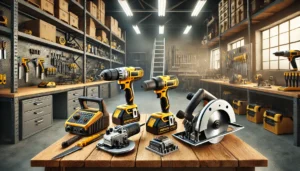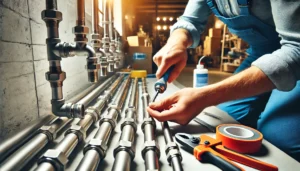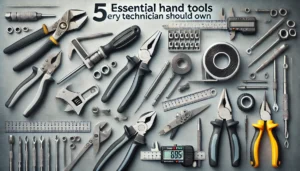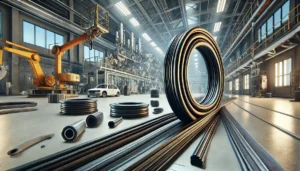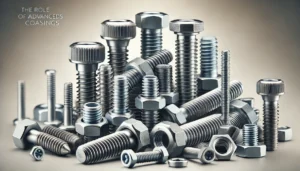CAD is now more than just a tool in industrial design; it has become a cornerstone technology. This marvel of innovation enables a designer or an engineer to create, modify, analyze and optimize designs in ways that were simply impossible just a few decades ago. In this study, we’ll try to explain why mastering CAD is not a skill but a necessity in modern industrial design powered by innovation towards efficiency and why innovation meets efficiency. While traversing the evolution and application of CAD, we will also explain how Induskart, a solutions provider in the industrial domain, integrates with advanced technology to transform the capabilities of different industries through its extensive product portfolio.
2. CAD in Industrial Design: An Overview
The Evolution of CAD:
The development of CAD started as an attempt to represent geometric information in a format usable by computers. From its modest beginnings in the 1960s, when it was a costly and complex luxury for large corporations, precision engineering tools have undergone remarkable changes. It is now a cornerstone of industrial design for professionals and hobbyists alike. Remarkable advancements in computer power and increased demand for accuracy and efficiency in manufacturing and design processes have driven this change.
Current Relevance:
Today, CAD is vital in the design and manufacturing processes of different industries, such as automotive, aerospace, and construction. For Induskart, a company serving with water treatment, petrochemical engineering, and pharmaceutical industries, CAD is equally important. Induskart uses CAD for designing and visualizing complex components like valves, pipe fittings, and safety equipment in water treatment plants prior to their fabrication. The accuracy of the 3D models and prototypes produced by CAD assists Induskart and its clients in saving time, reducing costs, and cutting down the error rate, thus maintaining the quality and precision standards of the end products.
3. CAD’s Application Considering Other Induskart Products
Application in Different Industries:
The versatility of CAD shows through its use in almost every industry. A good example is Induskart’s extensive product range. Consider industrial valve design. CAD design offers customization to the level that these parts can be designed for particular pressures and temperatures. CAD applications in pipe fittings also assure proper alignment of ports which maximizes fluid flow in water treatment and petrochemical engineering industries. Another important branch of Induskart’s products is safety equipment. This type of CAD technology significantly impacts safety equipment design. It is used to design properly shaped safety clothes and equipment that conform to the requirements of the users. CAD has a significant responsibility in changing a design idea into a working solution and that is what Induskart strives for, precision in value addition.
Improving Efficiency and Accuracy:
Innovation is CAD software; it gives modern businesses significant advantages in terms of efficiency and accuracy. Businesses such as Induskart, which offers unparalleled industrial solutions to clients, cannot afford to ignore CAD. It enables rapid prototyping and simulations. CAD also helps in the reduction of error through various analyses and simulations. Accuracy in this context means much more than getting dimensions accurate; it means capturing the potential design errors that could result in costly redesigns. Induskart’s precision in product development is equally matched by CAD accuracy. Induskart’s business philosophy is delivering promise and trust through every product, and CAD seamlessly integrates that philosophy.
4. Mastering CAD: Steps and Strategies
Basic to Advanced Skills:
As with any tool, mastering CAD starts with its basic functionalities such as 2D drawings and 3D models. Further skills progression would consist of more advanced techniques such as intricate 3D modeling, rendering, and animation. First learns aides, patience, practice, and the eye for the finer details is what make a CAD expert
Training and Resources:
You will find many resources to learn CAD due to technology in the modern world. Most online platforms provide teachings at all levels. Platforms like Coursera and LinkedIn Learning offer a multitude of CAD courses that may match with some products in Induskart’s catalog like industrial design, piping design, and modeling of safety equipment. Even CAD companies themselves, like Autodesk and SolidWorks offer some tutorials that could be extremely helpful. For hands-on experience, reviewing case studies or looking at problem-solving learning modules related to Induskart’s products offer invaluable guidance.
5. Real-World Applications of CAD in Industrial Design
Case Studies:
One case that stands out is industrial valve design. A design team had to solve a CAD problem that included making a valve for very specific pressure and temperature constraints. The manufacturer had to build a valve out of a specific material which was impossible. Using CAD, the design team made a model of the valve, tested its construction of various materials, and simulating its performance in multiple conditions. This is extremely cutting edge tech and is going to change engineering as we know it. It saves an immense amount of time and resources because reliability and safety testing on the prototype is done before it is built.
Another example is in relation to the design of ergonomic safety gear for industrial workers. Using CAD, ergonomists could design 3D models of safety helmets incorporating elements such as weight balance, comfort, and impact absorption. The testing and refinement of the design in simulated environments facilitated the advancement of helmet technology which, while still bulky, offered improved comfort and safety for workers in advanced industrial settings.
Induskart’s Relevance:
In both instances, Induskart’s vast assortment of materials and tools would allow for easy integration into production on the floor. Induskart’s extensive inventory of metals, fabrication tools, and CAD design aids showcase their capability to Realise the implements of interdisciplinary engineering projects, affirming the relevance of Induskart’s supplies for industrial design CAD systems.
6. The Future of CAD in Industry
Emerging Trends:
The most notable advances in CAD for industrial design are quite enthralling. One such trend is the application of AI and machine learning, which could promise the further enhancement of CAD tools and may even automate portions of the design process. The implementation of augmented and virtual reality (AR/VR) for immersive design interaction is another emerging trend that enables designers to interact with their works within the virtual realm. Besides that, cloud-based CAD solutions are becoming increasingly popular because of their ability to access and collaborate on designs from any location around the world.
Alignment with Induskart’s Vision:
Induskart is at the forefront of these trends due to its focus on keeping up with technological innovations. Their commitment to providing the best industrial solutions is precisely the path where CAD technology is heading. It is certain that Induskart Technologies will remain the industry leader in the industrial supply sector by adopting these advanced CAD tools and techniques that will assist in providing better solutions to the clients.
7. Skill Development: Beyond CAD
Complementary Skills:
CAD skills is only a part of the industrial design puzzle. Other supplementary skills further deepen a professional’s mastery. Knowing how to effectively operate a 3D printer is crucial for a designer as it allows them to produce working prototypes from their CAD designs. Another important skill is having some knowledge of materials. The design stage can be greatly shaped by knowing the various materials’ characteristics and constraints. Having some knowledge of project management tools and techniques is an added advantage as one is able to effectively manage the design project’s lifecycle, from inception to completion.
Lifelong Learning:
Induskart’s philosophy of turning concepts into effective solutions exemplifies this. Industrial design is another field that’s dynamic and requires continued study. One has to follow new trends in software applications, design, and the latest in manufacturing technologies. This was equally true with Induskart where innovation keeps them ahead of competition. Induskart’s tools and services are often updated to be in line with recent changes in the industry and to provide relevant solutions to clients.
8. Conclusion
In this case study, we examined how the use of technology is changing the design of industrial items like valves and even safety gear, showcasing the CAD design intricacies. We looked at how mastery of CAD assisted with 3D printing, materials science, and other complementary skills enhances one’s professional stature in industrial design. We have also looked into the future of CAD technology, incorporating AI and cloud services. Induskart is a case of a company that not only anticipates these trends, but is also ready to provide the relevant technologies, tools, and materials needed for these innovations.



